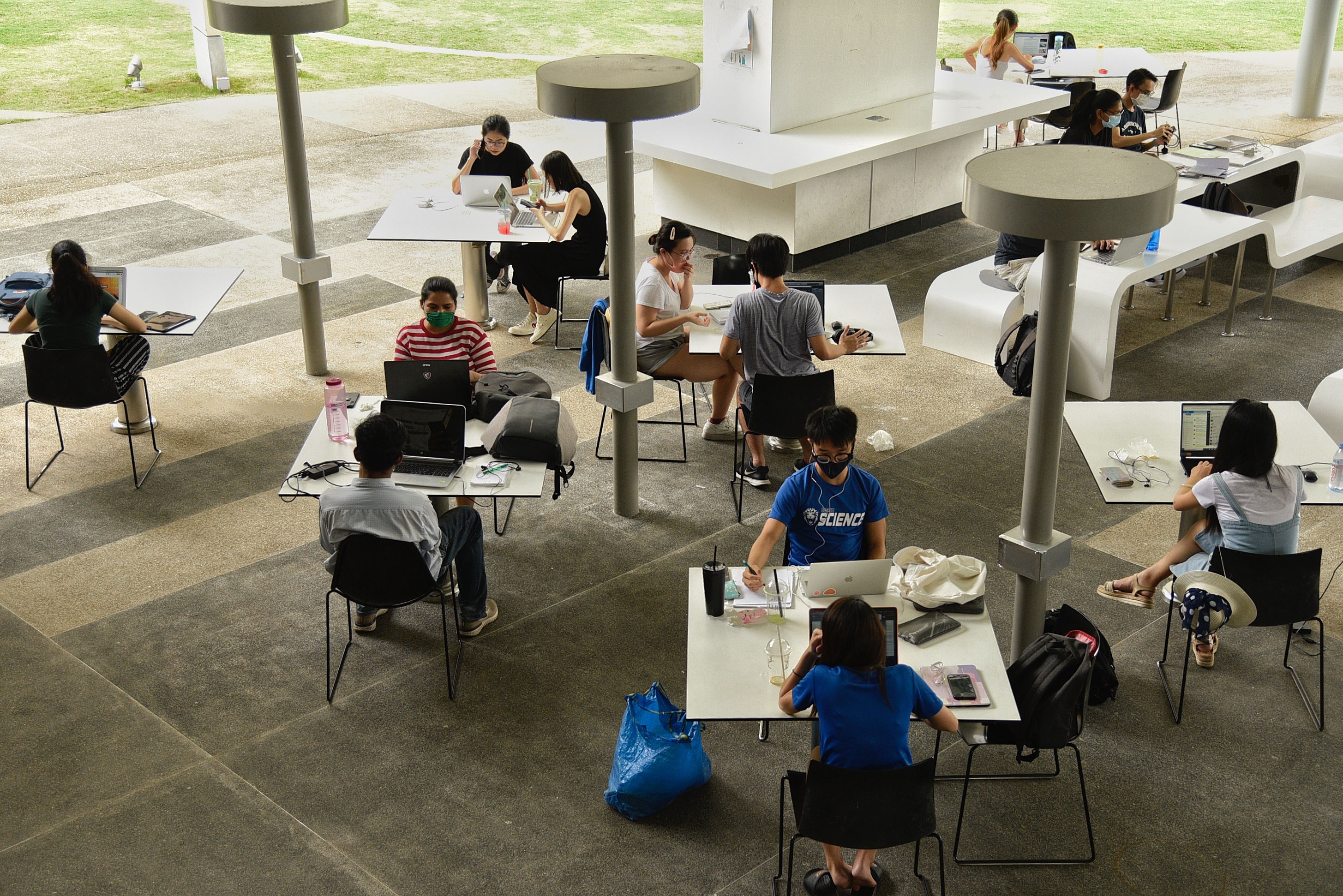Students with special educational needs struggle with transition to higher education
Sign up now: Get ST's newsletters delivered to your inbox

Students with special educational needs make up about 3 per cent of the full-time student population in institutes of higher learning over the past three years.
PHOTO: ST FILE
Follow topic:
SINGAPORE - Students with special needs such as dyslexia and autism often find it tough to make the transition to university, said experts.
They were speaking to The Straits Times about gaps for special needs students in higher education settings who do not receive as much support as those in primary and secondary schools.
Special needs students struggle with skills such as time management and prioritisation, which are crucial at the tertiary level, they added.
Ms Alina Chua, principal autism consultant at autism-focused Pathlight School, said autistic students have difficulty familiarising themselves with the different course structures and modes of assessment for each module.
They also have problems getting from one class to another on time and coping with last-minute lesson changes in locations.
Last month (July), the Ministry of Education (MOE) launched a new vocational education syllabus for special education (Sped) schools that will emphasise the teaching of soft skills to prepare Sped students for work.
About 450 students graduate from Sped schools each year, with around half of them either getting jobs or progressing to institutes of higher learning (IHLs), said the ministry.
Students with special educational needs make up about 3 per cent of the full-time student population in IHLs over the past three years, according to MOE estimates.
The ministry said each IHL has a special educational needs support office which can be tapped for support from pre-enrolment.
It added that IHL educators are trained to teach such students, while support officers advise students as well as educators on how to develop intervention plans and monitor those who require closer support.
MOE said Singaporean students with learning and social difficulties - such as dyslexia and autism - in polytechnics and the Institute of Technical Education can tap a fund for up to $5,000 for devices or support.
The Nanyang Technological University said its Inclusion and Accessible Education team works with students, schools and the University Well-being Office to provide support.
For example, students with writing difficulty may be given access to laptop and printer services and more time during exams. New students with special needs who approach the team are assigned to a buddy trained in disability awareness, to help them adjust to university life.
But experts and students said more can be done.
Ms Serena Abdullah, assistant director of curriculum at the Dyslexia Association of Singapore (DAS), said language processing and short-term memory deficits associated with dyslexia may make it even harder for some students to process new information.
Students in IHLs are expected to speak up for their needs, posing a challenge to dyslexic students who may lack the skills to request accommodations, such as materials with larger print or sitting exams in a separate room.
Some students also may not declare their learning challenges for fear of being stigmatised.
Ms Abdullah said schools can deliver lessons through multiple modes such as audio and visual materials, provide instructions explicitly and in bite sizes, as well as strengthen avenues for students to seek advice.
Ms Chua said communication and social skills are taught in Pathlight School. To ease the transition to mainstream schools, students attend classes at its mainstream partner schools daily.
But Paul (not his real name), an autistic fourth-year social work undergraduate at the Singapore University of Social Sciences, said that Pathlight and mainstream school students did not mingle much, and that the transition from Pathlight to junior college and university was rough.
Paul, 25, said class sizes jumped from a ratio of about 10 students per teacher in Pathlight to easily 70 students per teacher in university.
He and five other autistic individuals ST spoke to also found it hard to connect with their peers in university, who they felt lacked empathy for autistic people.
People should try to understand how those who are different think, added Paul.
"I was ostracised throughout uni life. Cliques formed from day one and tend to stick with each other throughout uni. After that, it's nearly impossible to join in," he said.
"I tried many times to talk to the school counsellor about my situation in class, but I felt that the session was trying to fix me instead of getting the class to be more inclusive."

